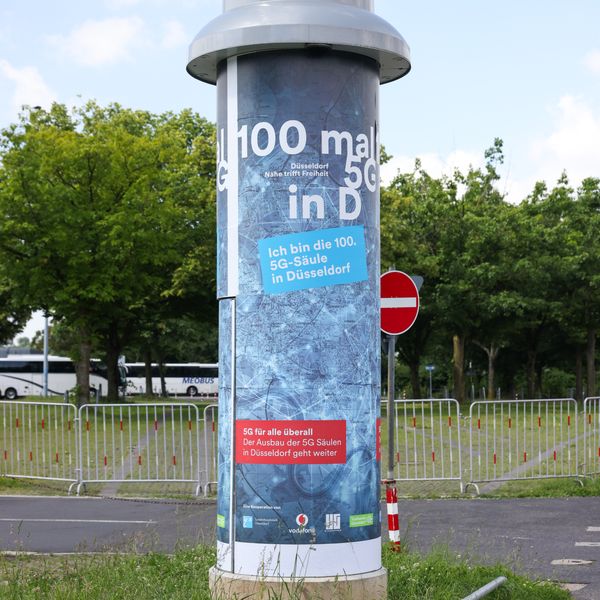The Vodafone 5G advertising columns have received a location certificate from Germany’s Federal Network Agency
German operator Vodafone has installed a total of 100 5G sites using existing advertising columns in Düsseldorf, the carrier said in a release.
“The advertising columns in Düsseldorf, which have been part of the cityscape for decades, are experiencing a technical renaissance. The pilot project shows how existing structures can be modernized and the mobile network can be expanded in a space-saving manner,” said Stephan Schneider, head of political communication NRW at Vodafone.
Vodafone Germany noted that a further 50 advertising columns will be equipped with 5G in the next two years, adding that this initiative ensures even better reception and greater network stability and at the same time solves a major problem that still exists throughout Germany with the expansion of the 5G network in inner-city areas: the lengthy search for locations for new mobile phone stations and the lengthy approval procedures.
The carrier highlighted that three 5G antennas each and all the technology that is mounted on large masts at conventional cell phone sites are built into the basilica-shaped roof and the concrete body of the 4.79 meter high and 1.62 meter wide advertising column. The entire construction process of such a 5G advertising column takes less than half the time compared to a conventional cell phone site, the telco added.
The Vodafone 5G advertising columns have received a location certificate from Germany’s Federal Network Agency to prove their safe operation. The installed 5G antennas, which were built in cooperation with Ericsson, each serve a radius of around 400 meters around each advertising column. On average, there are currently almost 6,000 connections per column with 5G-capable smartphones every day and an average of around 200 gigabytes of data per column flows through Vodafone’s 5G network every week.
Vodafone previously said it had completed more than 1,200 construction projects within the first quarter of the year, effectively expanding its 5G Standalone (5G SA) network.
Vodafone said it has put 155 new mobile phone base stations into operation and installed additional antennas for LTE, 5G and 5G SA at almost 1,100 other locations in order to expand broadband capacities.
Regarding the expansion of the telco’s new 5G SA network, the telco said that almost 40% of the construction work in the first three months of 2024 served to expand this network across the country. As a result, around half of the population in Germany is now covered by Vodafone’s 5G SA network.
Vodafone Germany had launched its 5G SA network in 2022 in partnership with Ericsson, Nokia, Qualcomm and Oppo. For the 5G expansion, Vodafone is currently relying on frequencies in the 3.6 GHz, 1.8 GHz and 700 MHz bands in large urban areas, residential areas and suburbs and rural areas across Germany.
Vodafone initially launched its 5G network in Germany in 2019, using 3.5 GHz frequencies that it acquired from Telefónica in 2018.

